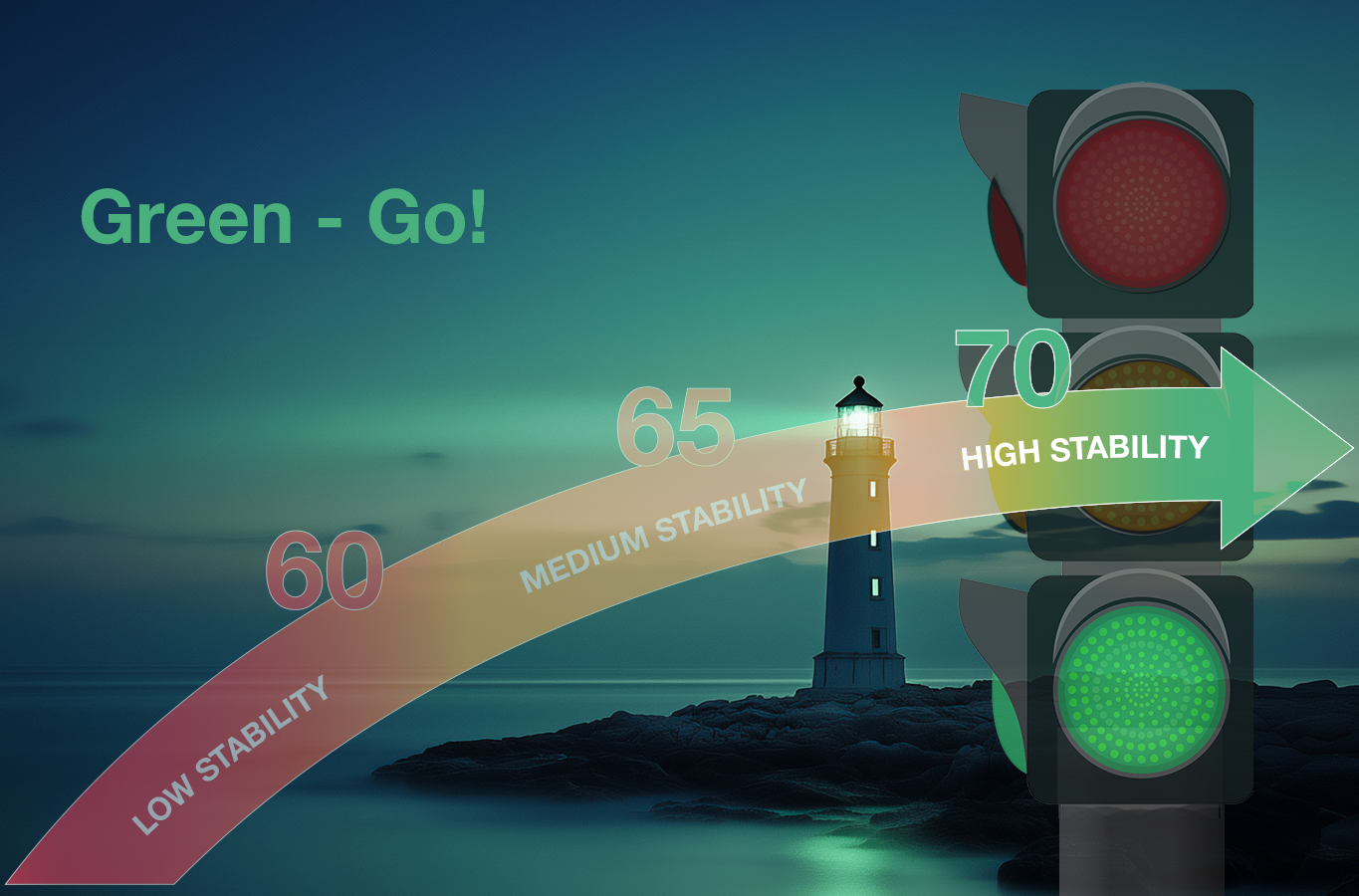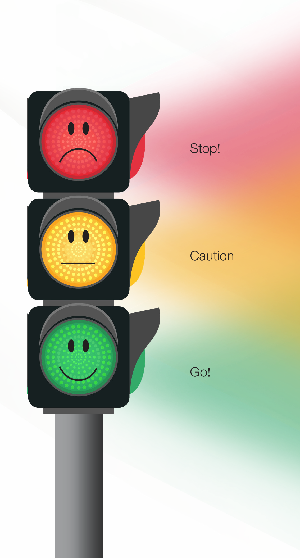
Green – Go! Why ISQ > 70 means you can proceed with confidence
Sep 11, 2025
This is the final post in our three-part series on the Osstell ISQ scale. Having covered the red and yellow zones, we now arrive at the green zone — where ISQ values above 70 indicate strong implant stability and readiness for restoration. This zone represents confidence in clinical outcomes and the potential for immediate or early loading.
In implant dentistry, stability is the foundation of success. When the Osstell Beacon lights up green — indicating an ISQ value above 70 — it’s more than just a number. It’s a clear signal that the implant has achieved sufficient stability to move forward confidently.
Green – Go!
The green zone on the Osstell ISQ scale (ISQ > 70) signifies that the implant is ready for the next step. In this article, we explore how clinicians can act when encountering a green ISQ value — whether at the time of surgery or during follow-up. Based on current evidence, we outline clinical recommendations for safe progression to loading and restoration.
The power of measurement: Clarity through confidence
Osstell’s traffic light system — red, yellow, green — translates complex stability data into intuitive guidance. In the green zone, this guidance becomes especially empowering. It allows clinicians to make decisions based on objective data rather than assumptions.
Green means go.
What the evidence tells us about ISQ > 70
High ISQ = high stability
Sennerby (2013) describes ISQ values above 70 as a safe zone where both primary and secondary stability are typically sufficient to support loading. A 10-point increase (from 60 to 70) in ISQ corresponds to approximately 50% greater implant stability — a significant biological difference. Ref 1
Early loading is possible
Studies by Bornstein et al. (2009) and Kokovic et al. (2013) demonstrate that implants with ISQ > 70 can be loaded early — sometimes within weeks — without compromising osseointegration, provided other clinical conditions are favourable. Ref 3
Stability over time
Hicklin et al. (2015) found that implants with ISQ > 70 at placement tend to maintain or even increase their stability over time, further supporting predictable treatment outcomes. Ref 4
Evidence-based recommendations for ISQ > 70
At the time of surgery:
- An ISQ > 70 indicates sufficient primary stability to consider early or immediate loading.
- One-stage surgery is often appropriate.
- A shortened healing period may be considered, depending on the overall clinical context.
During follow-up:
- An ISQ > 70 confirms biological stability and supports progression to prosthetic loading.
- Use OsstellConnect to document stability development and communicate clearly with patients.
Helping clinicians feel confident
The green zone is not just a signal to proceed — it’s a confirmation that treatment is on track. With ISQ as a guide, clinicians can make timely, evidence-based decisions and provide reassurance to their patients.
Summary
Red – Stop!
Yellow – Caution!
Green – Go!

When the ISQ value is above 70, the message is clear: go. The green zone represents a stable foundation for successful implant treatment. By measuring ISQ and following evidence-based protocols, clinicians can reduce uncertainty and increase the likelihood of predictable outcomes.
Don’t guess. Measure.
References
1. Sennerby L. Implantologie, 2013; 21(1):21–33. (In German only).
2. Kokovic et. al. Immediate vs. early loading of SLA implants in the posterior mandible: 5-year results of randomized controlled clinical trial, Clin Oral Implants Res. 2014
3. Bornstein et. al. Early loading of nonsubmerged titanium implants with a chemically modified sand-blasted and acid-etched surface: 6-month results of a prospective case series study in the posterior mandible focusing on peri-implant crestal bone changes and implant stability quotient (ISQ) values, Clin Implant Dent Relat Res. 2009
4. Hicklin el. al. Early loading of titanium dental implants with an intra-operatively conditioned hydrophilic implant surface after 21 days of healing, Clinical Oral Implants Research, 2016
Read more about and download the Osstell ISQ scale here.

You can find the other two blog posts in this series here:
Red – Stop! Why ISQ < 60 means it is time to protect the implant – Osstell®
Yellow – Caution! Why ISQ 60–69 requires careful evaluation – Osstell®

Add comment